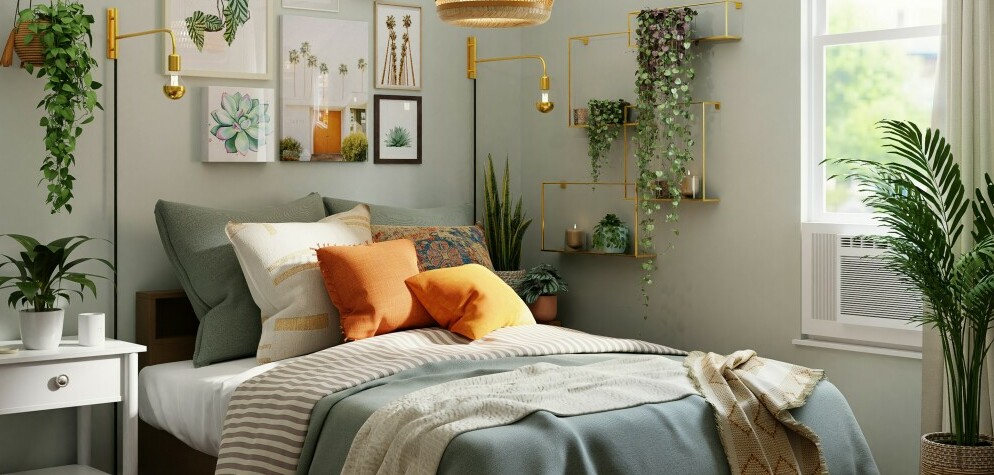
I’m going to kick things off by focusing on the absolute basics for crafting your meditation sanctuary at home. It’s not just about having a corner to sit in; it’s about creating an environment where you can disconnect and find inner tranquility.
Choosing a quiet and private spot in your home is crucial. You’re aiming for a place that buffers you from daily bustle and unexpected interruptions. Whether it’s a dedicated room or a secluded nook, ensuring privacy helps in establishing a consistent meditation practice.
Natural light and proper ventilation in your meditation area, these elements play a quiet but pivotal role in maintaining an uplifting and comfortable space. A gentle breeze and soft sunlight can dramatically enhance your meditation experience.
Now what about color? Yes, it does more than just please the eye. Colors can profoundly affect your mood and your ability to relax. Soft, earthy, or pastel shades often work well to evoke a sense of calm. It’s not just a visual preference; it’s about creating a psychological backdrop for peace.
When it comes to seating, comfort is king. This isn’t just about picking something that looks good; it’s about providing your body proper support to help maintain focus. Be it a cushion, chair, or yoga mat, choose something that resonates with you and keeps your spine aligned without distraction.
Cultivating Serenity: Decorating and Personalizing Your Meditation Area
Once you’ve nailed down the perfect spot in your home, it’s time to turn it into a true sanctuary. You’re going to find out about infusing your meditation area with elements that not only calm the senses but also hold personal significance. Let’s start with nature because, in my opinion, it has an unmatched ability to soothe the soul. Adding plants can introduce a vibrant, living energy, and a small indoor fountain might provide a serene soundtrack of flowing water.
This isn’t just about greenery; it’s also about the things that matter to you. Photos that remind you of joyful times, or a keepsake from a beloved place, help create a space that resonates with your inner self. That’s the strategy I like to leverage: surround yourself with positivity, and it will reflect in your practice. Your meditation space should be a reflection of your journey, embodying the tranquility you wish to achieve.
Now, about engaging your other senses: soft, ambient music or simple wind chimes can provide auditory calm, while scented candles or diffusers with essential oils like lavender or eucalyptus might offer a layer of aroma-therapeutic comfort. These are details, but believe me, they make all the difference in transitioning your mind from the chaos of the everyday to the peace of meditation.
Just don’t focus too much on perfection. It’s about what feels right for you. Choose items that have a calming effect and help you turn inward. Remember, a clutter-free zone is key and a few well-chosen items will serve you better than many that don’t serve a purpose. That’s where the power of minimalism can shine in a meditation space, allowing you to focus on what’s truly important—your wellbeing.
Maintaining Your Sacred Space: Long-Term Considerations for a Meditation Retreat
Now that you’ve set up your personalized meditation area, the journey doesn’t end there. Keeping this space dedicated to tranquility will be a continuous process. Regular upkeep is crucial to its effectiveness. A clean and orderly environment mirrors a clear mind, which is essential for deep meditation. So, make it a habit to tidy up after each session.
As you grow in your meditation practice, your needs may evolve and this is natural. Your meditation space should be a reflection of your journey. Feel free to adjust the space’s elements as you discover what works best for you. New symbols of personal significance, changing seating options, or updated soundscapes can all support your evolving practice.
Incorporate technology thoughtfully. This could mean using a meditation app to guide your sessions, or it might mean keeping electronic devices out entirely to minimize disruption. It’s all about finding the right balance that supports your focus and mindfulness.
If you’re sharing your living space with others, finding that perfect balance for your meditation retreat can be a little tricky. Communicate with your family or housemates to establish mutual respect for your meditation time and space. It’s also crucial to be flexible—sometimes, you might need to adjust your schedule to maintain harmony at home.
Remember, just don’t focus too much on perfection. Your meditation space, like your practice, is a work in progress. It should serve as a sanctuary that evolves with you. With care and attention, this space can remain a supportive cornerstone of your mental and emotional well-being.
